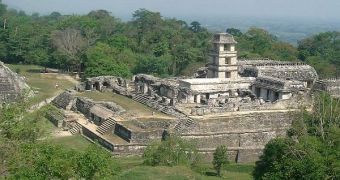According to a growing body of pieces of evidence, it would appear that the Ancient Mayans were sufficiently developed from a technological standpoint to allow for them to control running water. In this regard, more and more archaeologists are saying, the civilization might have had fountains adorning its cities, as well as toilettes inside selected homes. If this information is verified, then it could mean that history in engineering would have to be rewritten. In the Americas, running water is thought to have been introduced by Spanish invaders, LiveScience reports.
In Europe, the most ancient proof of running water was found dating back to about 1,400 BC. The system was discovered in a Minoan palace, which was built on the island of Crete. According to new evidence, it may be that running water conduits functioned in central America between 100 and 800 AD. The investigators made the discoveries in the Mayan center at Palenque in Chiapas, Mexico. They explain that the settlement was a full-blown city, which, at the height of its glory, featured more than 1,500 edifices. The structures included temples, palaces, residences, markets and so on, and are believed to have been inhabited by more than 6,000 people.
“The ancient Maya called this city Lakamha' or 'Big Water' because of its nine perennial waterways, 56 springs, and hundreds of meters of cascades,” Pennsylvania State University (Penn State) archaeologist and researcher Kirk French explains. He also adds that the city had arguably the most complex system of water management of all known settlements of the time. Because of the abundance of water that surrounded the city, engineers in the Mayan empire constructed numerous aqueducts beneath the surface, so as to guide water away, and prevent flooding.
But Palenque apparently hid other features too. Experts discovered a smoothly plastered conduit leaving one of the aqueducts. They say that the structure followed a steep slope, and that it abruptly narrowed at its end. Scientists calculate that the resulting water pressure might have driven a fountain more than 20 feet (six meters) high. “This finding is yet another technological achievement made by the Maya independently of the Old World. The Maya of Palenque had water pressure technology by 750 AD at the very latest and most likely much earlier,” French adds.
The idea about the toilettes may not be very far-fetched either. “Getting running water to the palace was impossible without water pressure,” the expert adds. “There is a widely held view that the Maya were not necessarily great engineers because their buildings were relatively simple. But in regards to water management their engineering expertise was by all accounts very impressive,” he concludes.

 14 DAY TRIAL //
14 DAY TRIAL //